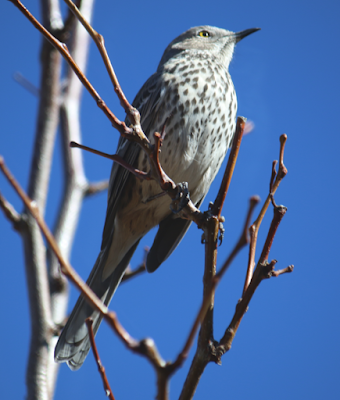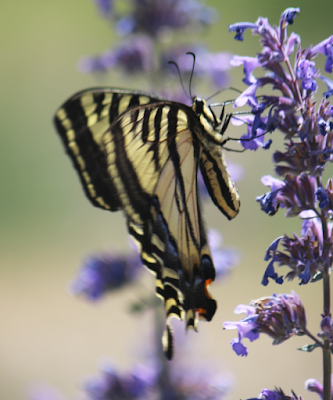This particular thrasher looked so beautiful against the bare dogwood branches and the midday light. The color scheme is inspiration for a painting. We planted red dogwood as we liked the way it looked against the snow when devoid of leaves. The thrasher showing up in these beautiful bushes was a bonus. They are skittish birds and will run away quickly if disturbed. They would mostly rather run than fly away when startled. I love the amber color of its eyes. Although I have read they can have beautiful lemon yellow eyes as well. Sexes are similar.
We did not see any Sage Thrashers last winter so I am happy they are making a return visit this winter. Our first winter in Aldea there was a group of six that made consistent visits to find water in our yard. I had read that they tend to hang together in the winter in these small groups and scour for food and water together. However, this thrasher was a loner. Perhaps it was enjoying some solitary moments on an unexpected warmish New Mexico winter day.
This particular bird did not stay long in the dogwood and flew up into a bare Honey Locust tree. This allowed me to get a few more photos of its smudged underside markings against the brilliant blue clear winter sky New Mexico is famous for. And also to get a better profile photo of its unique curved beak.
The Sage Thrasher is sometimes confused with the much larger Curve-billed Thrasher, which also visits Aldea occasionally as I have seen them in our yard also. But I find that in low light conditions the Sage Thrasher and the Townsend’s Solitaire look very similar since they both have white or light eye-rings. Both were in our Aldea yard at the same time recently. These birds can be in our area year-round, but I have not seen them during the summer.


















































